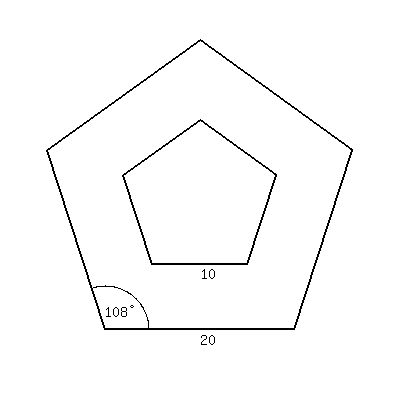Here is a different approach. It's longer but it doesn't
use the formula for the area of a regular polygon,
which is not usually studied in a geometry or trig class.
The following way only uses the interior angle formula,
the tangent equation, and the area of a trapezoid (or
trapezium) formula.
Each interior angle of an n-sided regular polygon is
 =
=  = 108°
= 108°


 Then we draw in two vertical lines in red, which divide
the 20cm side into 5cm, 10cm, and 5cm lengths:
Then we draw in two vertical lines in red, which divide
the 20cm side into 5cm, 10cm, and 5cm lengths:
 In the right triangle, we find h from
tan(54°) =
In the right triangle, we find h from
tan(54°) =  h = 5·tan(54°)
Area of trapezoid =
h = 5·tan(54°)
Area of trapezoid =  =
=  Area of all 5 trapezoids =
Area of all 5 trapezoids =  = 516.1432202 cm²
Edwin
= 516.1432202 cm²
Edwin